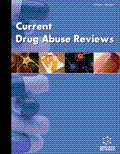Abstract
Hyperalgesia has been observed during ethanol withdrawal, comparable to the hyperalgesia observed during withdrawal from opioids. To determine the extent of this phenomenon and its potential mechanisms, both behavioral and in vitro studies are examined, and the roles of GABAA, glutamate and other receptors in mediating the acute and chronic antinociceptive effects of ethanol are reviewed. Hyperalgesia during ethanol withdrawal is a robust phenomenon that has been observed in various strains of mice and rats, with different methods of exposure to ethanol, and with a variety of nociceptive assays. GABA receptors play an important role in mediating the antinociceptive effects of ethanol, but too little research has examined the role of glutamate receptors to make any conclusion about their importance. Adenosine receptors, calcium channels, and protein kinase C appear to play central roles in mediating tolerance to antinociceptive effects of ethanol and mediating the hyperalgesia seen during withdrawal. Although some key pathways have been identified, further mechanistic work is necessary to fully characterize the mechanisms for the development of hyperalgesia following chronic exposure to ethanol. An understanding of how the hyperalgesia may fit in with other manifestations of ethanol withdrawal may be an important variable in determining treatment outcome. Clinical research is essential to determine the significance of the hyperalgesia to the severity of withdrawal and to relapse.
Keywords: Chronic ethanol exposure, tolerance, withdrawal, hyperalgesia, GABA receptor, NMDA receptor, adenosine receptors, calcium channels
 34
34















